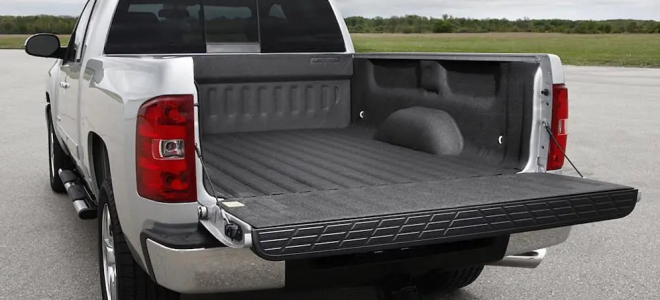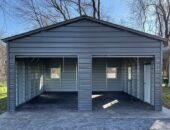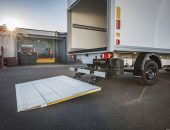As any truck owner will tell, a quality Bedliner is a must, if you are planning on using your truck for as long as you need it. Trucks are often hauling heavy loads, which can damage their beds and a good bed liner will keep this damage in check or even prevent it altogether. That is why it is essential for new truck owners to get a bed liner as soon as possible. Even if you aren’t sure which one to get, a cheap, temporary one is better than using your truck with no bed liner at all.
Truck beds are often exposed to fairly brutal treatment. After all, it isn’t really customary to put things in them delicately, but rather toss them. Even lightest objects can cause scrapes and dents, and from there, it is only a matter of time until corrosion sets in. Exposed to the elements, the truck bed will quickly become unusable, not to mention an eyesore.
When deciding which Bedliner to use, truck owners often decide based on these four factors: durability, price, looks, and convenience, not necessarily in that order. Cheap options may save you some money in the short run, but lack the durability and you will spend more on them over the course of your truck’s lifetime. Some of the most durable ones are pricey and not everyone can justify or afford to spend that much money on Bedliner. Finally, many people pay attention to aesthetics as well and looks are their primary concern.
In essence, there are two main types of bed liners, painted ones (you can see here more about them) and physical ones. Further, painted ones come in two flavors, high-pressure spray-on bed liners, and low-pressure spray-on bed liners. Physical ones also have two forms, drop-in, and mat bed liners. Below, we have listed the pros and cons of each of them. Hopefully, it will help you decide which of these options is the best for you and your truck.
High-Pressure Spray-On Bedliner
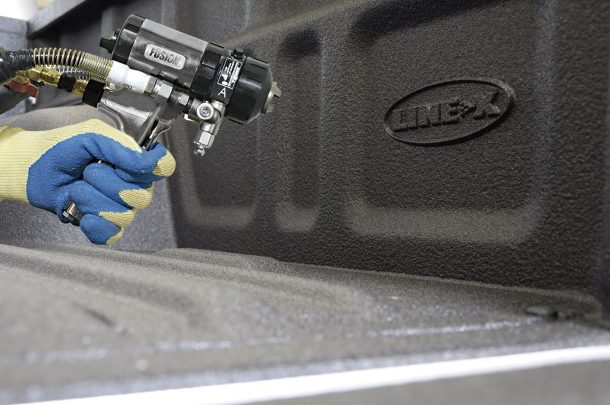
img source: worldkings.org
Made of polyurethane, polyurea, or a polyurea/polyurethane hybrid, modern bed liners are applied with the use of specialized, high-pressure spray guns. These usually give the best results, ensuring fine coverage and excellent bonding. They are less prone to scratches and tears and cure very fast, reducing your downtime. Thanks to excellent bonding, they are pretty durable and you won’t have to redo them often.
Low-Pressure Spray-On Bedliner
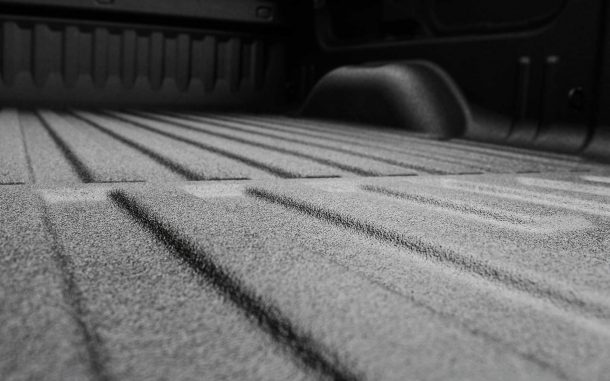
img source: mygaragestory.net
These are slowly being phased out, but remain the favorite choice for people who can’t afford more modern solutions, or simply plan to apply bed liner by themselves. They don’t require specialized equipment, an ordinary spray gun and compressor will do the trick. There are also roll-on solutions, designed to be applied manually by a roller. This means you can avoid the higher cost that comes with high-pressure bed liners, which not only cost more but are more expensive to apply. The downside is that they are just not as good. The curing times are longer and you need to protect the bed during it. If something falls in during the curing process, you will have a hard time removing it and may even be forced to repeat the procedure. The finish is rougher and not as smooth and good-looking and it isn’t as durable as high-pressure bed liners. Finally, they aren’t as durable and you may have to apply them again in just a few years, depending on the use of your truck.
Drop-In Bedliners
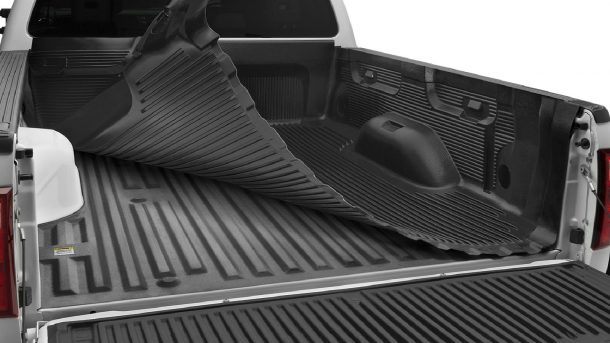
img source: ibsrv.net
The cheapest solution is the drop-in bed liners. Usually made of plastic, they are molded for each model specifically. They will do a decent job at protecting your truck bed, but aren’t durable and can easily break or tear under a heavy load or when treated roughly. Since they are cheap, replacing them isn’t big of a deal, but their main deficiency is that they don’t provide enough protection. Water and dirt can easily get under them, scratching the bed of a truck and causing corrosion. This is especially dangerous for people who don’t remove them often and the damage can spread unchecked until it is too late to do something about it. One thing they excel at is the transport of loose materials, like sand. By keeping it all inside a bed liner, you can prevent it from getting into every nook and cranny and making a mess. When sand gets into the cracks inside a truck bed, it is extremely difficult to remove it. Drop-in bed liners are also easy to maintain, just take them out and hose them down. Just make sure it is completely dry before putting it back, or that moisture will cause corrosion.
Mats
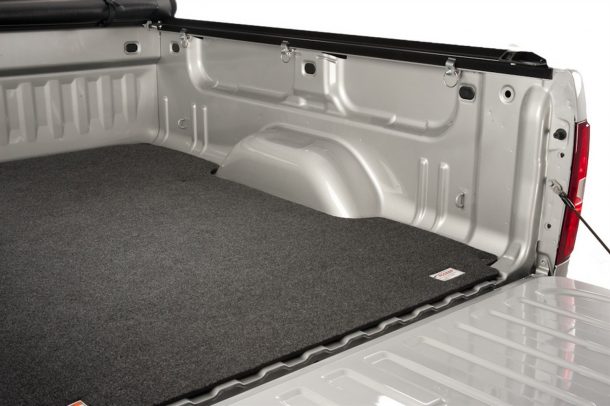
img source: nissantitanaccessories.com
Mats are the simplest solution when it comes to bed liners. Just roll it out and cut to size, if necessary. Mats are usually made of rubber or foam and are an excellent solution for protecting delicate cargo, as they act as a shock absorber. Over bumpy roads, this can mean the difference between delivering your cargo intact or scratched or even broken. Unfortunately, they suffer from the same deficiencies as the drop-in bed liners. Water and dirt can get under them, wreaking havoc on your truck bed. They need to be removed periodically to gain access to the bed and clean it properly. Don’t leave them on for months at a time, as the rust progresses incredibly fast and by the time you notice it, it may be too late.
DIY Options
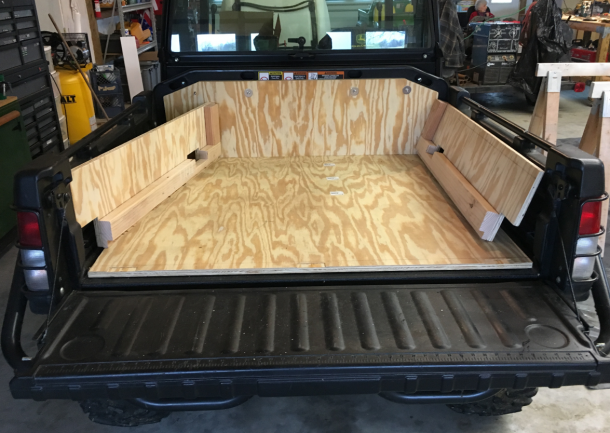
img source: gatorforums.net
DIY bed liners usually mean spraying them on yourself. For people who have some experience with applying paint, this shouldn’t be a problem, but for novices, it can be tricky. The key to success is preparation. Tuck bed must be thoroughly cleaned from all debris, washed, and decreased, to ensure proper adhesion. Read the instructions carefully, since not every Bedliner is applied identically. Many manufacturers have their own systems and to get a satisfactory result, you should obey them to the letter. It will also be impossible to get them to honor the warranty if you missed a step or did something wrong.
In this article we learned about bedding if you would like to learn about truck covers, you can visit here.

